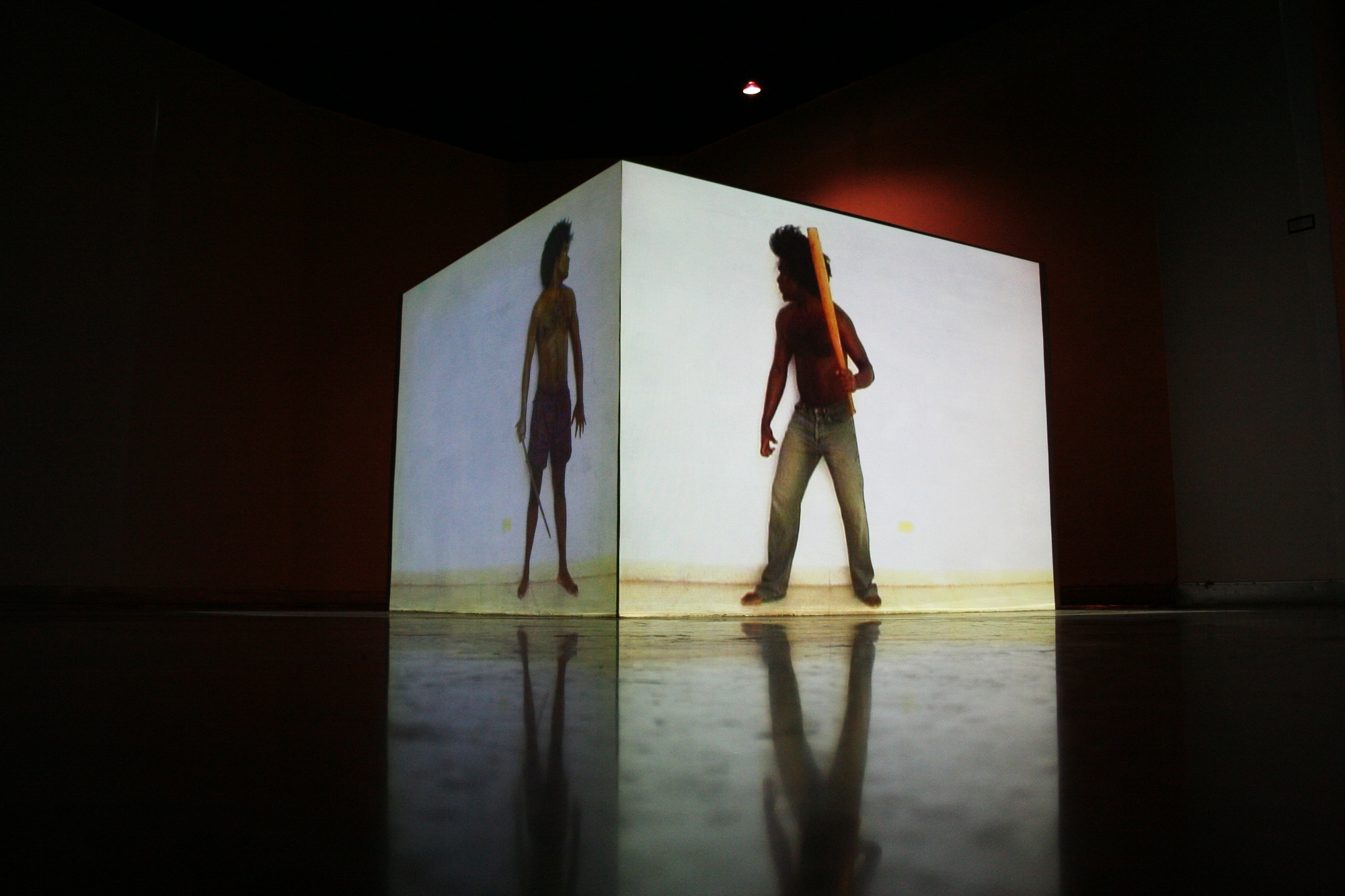
News
Cambridge Residents Slam Council Proposal to Delay Bike Lane Construction

News
‘Gender-Affirming Slay Fest’: Harvard College QSA Hosts Annual Queer Prom

News
‘Not Being Nerds’: Harvard Students Dance to Tinashe at Yardfest

News
Wrongful Death Trial Against CAMHS Employee Over 2015 Student Suicide To Begin Tuesday

News
Cornel West, Harvard Affiliates Call for University to Divest from ‘Israeli Apartheid’ at Rally
A Dilated Biography of Cuba and Its Artists

When a human being is born, how does his or her story develop? With a neat beginning and an end, does it follow the trajectory of a straight line? Cuban writer and artist Severo Sarduy offered one explanation, according to a press release on the School of the Museum of Fine Arts' website: "[B]iography usually happens before birth and then expands (or dilates)." This angle forms the theme under which curator Jorge Antonio Fernández Torres brings together contemporary Cuban voices from the art world in an exhibition that opened on Sept. 9 at the SMFA.
"Dilated Biography: Contemporary Cuban Narratives" is ambitious in scope—it features the works of 15 Cuban contemporary artists from different walks of life. While new media and conceptual art constitute the majority of the works on display, the artistic strategies exhibit a wonderful breadth of authorial modes–from the performative (Felipe Dulzaides' "Ariba de la Bola" ["On the Ball"]) to the interactive-documentary (Grethell Rasúa's "Con Tu Propio Sabor" ["With Your Own Taste"]). "The exhibition...represents the coexistence of different memories [of Cuba]," Fernández Torres said in his curatorial statement.
Fernández Torres, who most recently undertook the mammoth task of co-curating the Cuban Pavillion at the 55th Venice Biennale with a show of 15 international and Cuban artists, seems generally insouciant about putting artworks of such diverse hues in direct dialogue with one another. He hopes that the mere atmospheric resonance amongst them will help highlight what he calls their individual poetics. "Cubans are eclectic, even in the way they think," he says half-jokingly. Sarduy, he says, conceived of the medley of cultures that is Cuba today not as an outcome of transculturation, but as the result of cultural layering.
San Francisco-based artist Tony Labat, who participates in "Dilated Biography" with two works conceived around forty years apart, makes a strong case for this phenomenon. His Californian brand of deadpan conceptualism is unmistakable among works of other Cuban artists both living on and outside the island today. This marked difference, Labat attests, has persisted through decades. "[I noticed it] some time in the late 1980s when I was invited to an exhibition ironically called 'Outside Cuba'," he says. "It was the very first time [when I participated in a group exhibition of Cuban artists], and my work looked strangely—and beautifully—out of place."
Labat's "Dialectic IV" (1978-2003), for instance, is composed of some 60 loaves of bread leaning against a red-painted wall. It was a response to his experience of discovering a Diego Rivera mural in the Student Gallery upon his arrival at the San Francisco Art Institute from what he describes as a very hostile Cuban exile community in Miami. "Seeing in the Student Gallery the Diego Rivera mural was... a moment of feeling that was the right atmosphere for me," he says. "I think I felt at home within the [counterculture] legacy of San Francisco. I felt as if it was the continuation of my foundation, growing up with the Revolution.
In retrospect, Labat's ability to think of his oeuvre not as hybrid but homogeneous, smoothly flowing from Havana to San Francisco, echoes what Fernández Torres describes as Sarduy's strong Zen inclination to be harmonious with himself and receptive to his surroundings. This tendency––a declaration of the superiority of inhaling and exhaling over the restraints of time, space, and identity––is echoed by Fernández Torres when he, through a translator, paraphrases Sarduy's response to a question on whether he misses Cuba. "For me, Cuba isn't just a place,” he says. “Cuba is an attitude––my body. It is everything somatic that exists in me.
“Now I am here in Copacabana” he continues, “and I am looking out at the Brazilian countryside, this beautiful Brazilian landscape that is beautiful. And I don't want to be anywhere else... aside from here. That's also Cuba. Cuba isn't just a place: it is an experience, and it is also an attitude."
—Staff writer Gökcan Demirkazik can be reached at gokcan.demirkazik@thecrimson.com.
Want to keep up with breaking news? Subscribe to our email newsletter.
